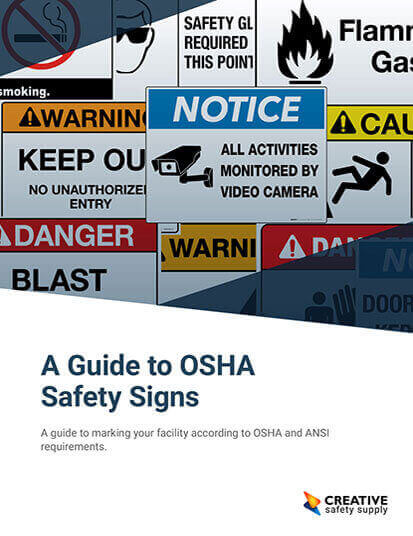The Accident Frequency Rate (AFR) Calculator is an essential tool in the realm of occupational safety, offering a quantitative approach to measuring and managing workplace accidents. Following the insights from the previous article on Accident Frequency Rate, this piece delves into the specifics of the AFR Calculator, explaining its formula, how to use it, and the significance of its results.
The Formula Explained
The AFR Calculator operates on a simple yet effective formula:
Accident Frequency Rate = Number of Accidents x 200,000 ÷ Total Number of Hours Worked
This formula calculates the number of accidents per 200,000 hours worked, a standard metric used in many industries to benchmark safety performance. The figure 200,000 represents the hours 100 employees would work in a year, providing a standardized scale for comparison across different organizations and time periods.
Using the AFR Calculator
To use the AFR Calculator, one needs to input two key pieces of data: the number of accidents and the total hours worked by employees during the period under review. Upon entering these values and clicking the 'Calculate' button, the calculator processes the inputs and displays the Accident Frequency Rate. This process simplifies complex calculations, making it accessible for safety managers and organization leaders to quickly assess their safety performance.
Interpreting the Results
The outcome of the AFR Calculator is expressed as the number of accidents per 200,000 hours worked. A higher rate indicates a greater frequency of accidents, signaling potential safety issues that need addressing. Conversely, a lower rate suggests better safety practices. Organizations can use these results to benchmark their performance against industry standards, set safety goals, and implement improvement strategies.
Conclusion
In conclusion, the Accident Frequency Rate Calculator is a pivotal tool for enhancing workplace safety. By providing a clear, standardized measure of accident frequency, it aids organizations in identifying areas for improvement, aligning with best practices, and fostering a culture of safety. Understanding and effectively utilizing this tool is a step forward in the journey towards safer, more efficient workplaces.
Understanding Key Workplace Safety Metrics
Below is a comprehensive reference table of essential safety metrics that can help your organization track, assess, and improve workplace health and safety performance. From calculating your Accident Frequency Rate (AFR) to using a DART Rate Calculator for determining the Days Away/Restricted or Job Transfer Rate, each metric offers valuable insights. You’ll also find guidance on the Lost Time Injury Frequency Rate (LTIFR), the Lost Time Case Rate (LTIR), and the Lost Workday Rate (LWDR), each of which provides a clearer understanding of how incidents translate into lost work hours. Additionally, tools like a Severity Rate Calculator and methods for determining the Total Case Incident Rate (TCIR), Total Recordable Injury Frequency Rate (TRIFR), and OSHA Recordable Severity Rate (TRSR) ensure you can accurately measure the full impact of workplace incidents. By leveraging these metrics, your organization can identify safety trends, implement preventive measures, and maintain a proactive approach to hazard control.
| Name | Acronym | Definition | Formula |
|---|---|---|---|
| Accident Frequency Rate Calculator | AFR | Number of incidents resulting in lost work time due to injury or illness per 100 employees. | (Number of Accidents × 200,000) / Total Hours Worked |
| Days Away/Restricted or Job Transfer Rate | DART | Number of incidents resulting in lost work time, restricted duties, or job transfers per 100 employees. | (Number of DART Cases × 200,000) / Total Hours Worked |
| Lost Time Injury Frequency Rate | LTIFR | Number of injuries resulting in lost time per 1,000,000 hours worked. | (Number of Lost Time Cases × 1,000,000) / Total Hours Worked |
| Lost Time Case Rate | LTIR | Number of incidents resulting in lost time per 100 full-time employees. | (Number of Lost Time Cases × 200,000) / Total Hours Worked |
| Lost Workday Rate (Lost Time Injury Rate) | LWDR | Number of lost workdays due to injury or illness per 100 full-time employees. | (Number of Lost Workdays × 200,000) / Total Hours Worked |
| Severity Rate | SR | Number of lost days relative to total hours worked per 100 full-time employees. | (Number of Lost Workdays × 200,000) / Total Hours Worked |
| Total Case Incident Rate (OSHA Recordable Incident Rate) | TCIR | Number of OSHA recordable incidents (injuries and illnesses) per 100 full-time employees. | (Number of OSHA Recordable Cases × 200,000) / Total Hours Worked |
| Total Recordable Injury Frequency Rate | TRIFR | Number of fatalities, lost time injuries, restricted duty cases, and other injuries requiring medical treatment per 1,000,000 hours worked. | (Number of Recordable Injuries × 1,000,000) / Total Hours Worked |
| OSHA Recordable Severity Rate | TRSR | The average number of lost and restricted days per OSHA recordable incident. | (Number of Lost Work Days + Number of Restricted or Transferred Days) / Number of OSHA Recordable Incidents |


